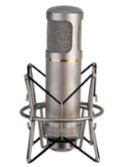 Here are a couple of great articles on recording better vocal tracks.
Here are a couple of great articles on recording better vocal tracks.
Successful Techniques for Recording Vocals from Electronic Musician covers the entire process, from preparing the singer, and microphone selection, to compressing the final track. The 10 tips on page 6 also make a handy reference.
I want to dispel the myth that large-diaphragm condensers always make the best vocal mics. Sometimes they do, but often they don’t. Small-diaphragm condensers and moving-coil and ribbon-dynamic mics can sound incredible on the right singer. In fact, many of the revered vocal performances of the 20th century were captured by ribbon mics. Keep an open mind, and trust your ears.
From Sound On Sound, Achieving Better Vocal Sounds in Protools references specific Protools techniques. However, the tips on fattening your vocal sound are platform-neutral, and should be easy to implement on any system.
Send to a subtle chorus from the main vocal track and pan the return to the left. Then repeat it and pan that to the right, but invert the phase of the second one. This gives the vocal a nice wide effect in stereo, but the effect completely disappears in mono. Watch you don’t use too much of this effect, though, as the vocal might be too low when the mix is collapsed to mono.
Tags: vocals

1 comment
Trackback URI Comments feed for this article
Yeah, even with a sm57 you can produce something incredible, combine with a good preamp. What mostly count it’s the performance. If the singer is comfortable with is setup, the most you’ll get out of him.